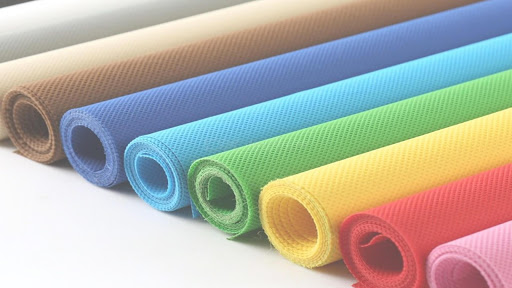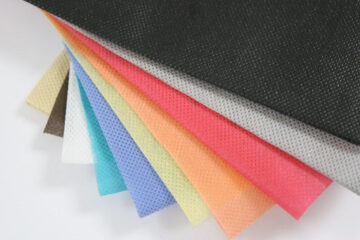Nonwoven fabric is made of interlocking fibers. The end product is often a web of fiber with no specific orientation. Nonwoven fabric can be made through chemical, thermal, solvent, and mechanical methods.
This article will look into how you can find the best nonwoven fabric manufacturers globally to make your work more manageable.

Contents
- 1 What Is Nonwoven Fabric?
- 2 What Is A Nonwoven Fabric Manufacturer?
- 3 What Are Nonwoven Fabrics Made Of?
- 4 What Is The Nonwoven Fabric Manufacturing Process?
- 5 What Are The Uses Of Nonwoven Fabric?
- 6 How can you choose the best nonwoven fabric manufacturer?
- 7 The Bottom Line
What Is Nonwoven Fabric?
Nonwoven fabric is a term used to refer to fabric materials bonded together filaments through mechanical, thermal, or chemical ways. Compared to traditional fabrics, nonwoven fabrics are not manufactured through weaving or knitting.
What Is A Nonwoven Fabric Manufacturer?
As the name suggests, a nonwoven fabric manufacturer is a company or factory that produces nonwoven fabrics. For instance, if you want to buy nonwoven fabric, you will have to find a reputable company that manufactures and supplies nonwoven fabric products.
These companies may focus on producing a single line of nonwoven fabric or an array of products such as nonwoven bags, nonwoven masks, etc.
What Are Nonwoven Fabrics Made Of?
Nonwoven fabrics are manufactured in a wide variety. For instance, most nonwoven fabric manufacturers use polyester, rayon, and olefin fibers to make nonwoven fabrics. This means that all nonwoven fabric products are environmentally friendly and affordable.
Accordingly, nonwoven fabrics come in a variety of softness, strength, absorbency, and other properties. These properties depend on the type of fiber and bonding agents used to make the fabric.
What Is The Nonwoven Fabric Manufacturing Process?
The nonwoven fabric manufacturing process involves a series of stages that determine the properties of the final product. Every product is filtered and categorized according to the desired specifications. The following steps are used to manufacture nonwoven fabrics:
Web formation
Web formation is the first and vital stage in manufacturing nonwoven fabrics. This phase determines the properties of the final product. The desired strength and length of the final product determine the type of web formation used.
Nonwoven fabric manufacturers use a wide variety of web formation techniques. However, the most used method is based on the textile carding process, especially when using staple fibers. For short fibers, the preferred web formation method is always similar to the paper manufacturing process. This is usually called the wet-laid process.
Web bonding
The process is usually the most complex stage of manufacturing nonwoven fabric. There are many methods used to bind filaments together in this stage. The following techniques can be used to bind fibers or filaments together in the web bonding phase.
- Stitch bonding
This method involves consolidating webs of fibers using knitting elements to interlock the fibers together. Stitch bond fabrics are used in many applications that relied on woven fabric. This is mainly because the process is speedy. Additionally, it is a cost-effective method of manufacturing nonwoven fabrics.
- Chemical bonding
As you may have imagined, chemical bonding is a method of binding nonwoven fabrics using chemical agents. This is one of the most used techniques in the industry. The process involves using chemical binders to bring the filaments together and then curing the resulting fabric.
- Needle punching
Needle punching is one of the mechanical methods used to bind fibers or filaments used in making nonwoven fabrics. Non-aligned barbed needles mounted on a board are used to punch fibers through the web. When the needles are withdrawn, the resulting fibers are entangled.
- Hydro entanglement
Also called water entanglement, this method depends on liquid-exerted pressure to bond fiber or filaments that form the fabric. High-pressure water jets are usually used to create tension.
- Thermal bonding
Heat is used to stabilize fibers in this process. In this case, the fiber acts as binders, so the process does not require chemicals or other binders.

Finishing and converting
Finishing and converting are the final stages of manufacturing nonwoven fabrics. The final operations include coating, laminating, embossing, or calendaring to achieve the desired properties.
After the final operations, the resulting nonwoven fabric is cut into the desired shape and size to meet customer needs and requirements.
What Are The Uses Of Nonwoven Fabric?
Nonwoven fabrics are used in a wide array of industries for many applications. The applications of nonwoven fabric range from medical, geotextile, automotive, domestic, and other industries. Some of the most popular uses of nonwoven fabrics are listed below:
- Nonwoven fabrics are used to manufacture surgical gowns, drapers, masks, caps, gloves, and other protective gear.
- Nonwoven fabrics are also used to manufacture high-quality wet wipes, wound dressing, and plasters.
- The medical industry also relies on nonwoven fabric to produce isolation covers for sensitive drugs.
How can you choose the best nonwoven fabric manufacturer?
If you want to buy nonwoven fabrics in bulk, you should consider looking for a reputable nonwoven fabric manufacturer or supplier. The first thing to consider is how you will find the best nonwoven fabric vendor. Here are some factors you should consider to make your search more manageable.
Customer reviews
Consider looking for reviews by other clients. This will help you get a snapshot of the experience to expect when dealing with any nonwoven fabric manufacturer. Additionally, you can evaluate the quality of services and products by looking at what other customers have to say about the company.
Production capabilities
If you want to buy nonwoven fabrics in bulk, you have to ensure that the manufacturer can meet your demands. For instance, you need a supplier to produce the volumes you need to ensure your business does not experience stock-outs.
Reputation
A nonwoven fabric manufacturer who has a good reputation in the market can produce products that meet your specifications. It is essential to look into the company profile to determine its experience and reliability.
Price
Before you settle for nonwoven fabric manufacture or supplier, it is essential to compare prices to find the best value for your business. There are many nonwoven fabric companies globally, and you have to settle on one that works for your budget.
The Bottom Line
Currently, nonwoven fabrics are in high demand due to the COVID-19 pandemic. Specifically, nonwoven face masks are highly demanded in the market. The market demand has brought many nonwoven fabric manufacturers into action. This means that you have to be careful when dealing with a nonwoven fabric supplier. You must ensure you do a thorough background check to ensure you buy from a reputable nonwoven fabric manufacturer.

 By Coco Ho
By Coco Ho

